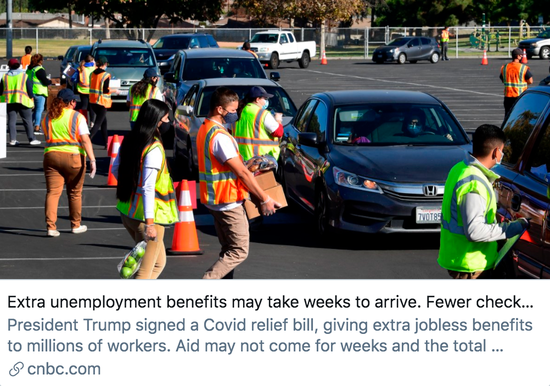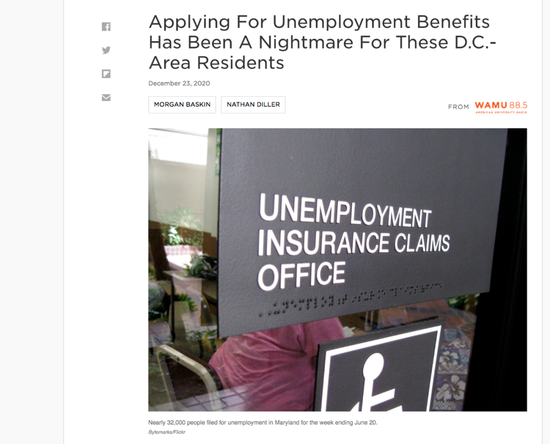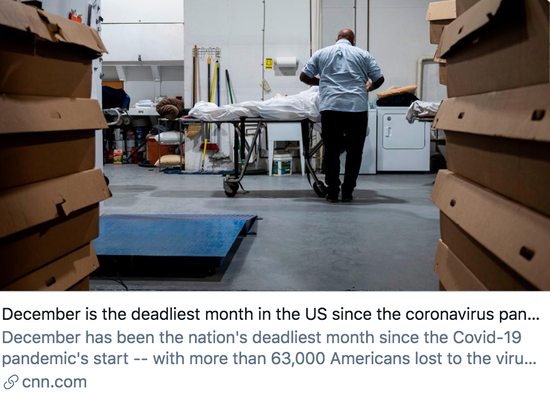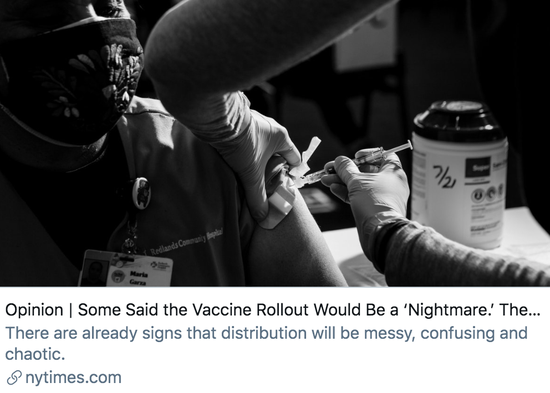Millions of Americans made a simple request to current President Trump and Congress when they were about to be unable to receive unemployment benefits, “Please help us.”
On December 27th, local time, Trump finally signed the coronavirus relief bill and the federal government spending bill, totaling $2.3 trillion. Previously, Trump put the package on hold for nearly a week.
But the New York Times pointed out that even if Trump signs the bailout bill, the delayed implementation measures will temporarily invalidate unemployment benefits. Max Rice, spokesman for Connecticut Governor Ned Lamont, said that “the inability to receive unemployment benefits will bring great uncertainty to people’s lives”.
U.S. media pointed out that the delayed payment of unemployment benefits may bring “nightmare” life to millions of Americans. However, in addition to the inability to collect the relief funds on time, the accelerated development of the epidemic and the chaos of vaccine distribution have also become a “nightmare” in the United States.
One of the “nightmares”: unemployment benefits may be delayed by five to seven weeks.
According to the US media CNBC, on the evening of December 27 local time, Trump signed a package of bills to make it into law, although this prevented the federal government from “closure” at midnight on December 28 and delayed people’s unemployment assistance for several weeks.
At present, the U.S. Department of Labor is preparing to issue guidance programs to states, according to which states need to pay workers a certain amount of subsidies, but the duration will vary from state to state.

Elizabeth Pankoty, policy adviser to the Center for American Progress, said, “While some states may start providing financial support in the next few weeks, most states may take five to seven weeks. In the context of the pandemic, this may cause people’s lives to be in trouble.”
On December 25th local time, Tony Bowens, a 31-year-old Chicago resident, told the Washington Post, “I just can’t believe it. It seems that every politician is using people’s lives to fight politically.”

Stephanie Lott said, “My friend has been sharing rent for me for the past two months.” According to the Washington Post, Lott is a substitute teacher, but due to the COVID-19 epidemic, most of the school’s courses have been turned online, and Lott has completely lost his source of income.
“Nightmare” II: Cases continue to rise, and the medical system is overwhelmed.
According to CNN, December is the “deadliest” month since the outbreak of COVID-19. In the past 26 days, the cumulative number of deaths in the United States has exceeded 63,000, and the cumulative number of deaths in November has exceeded 36,000.
“Christmas and New Year’s holidays could bring a new wave of pandemic spikes, and people are likely to gather and travel around to celebrate the holidays,” said Anthony Fauci, director of the National Institute of Allergy and Infectious Diseases. “We’re at a critical moment, and things may get worse next.”

Fauci stressed, “If you see the growth rate of confirmed cases after entering the fall, you will know that the current situation is very troublesome, which is disturbing.”
According to the University of Washington Institute of Health Metrics and Evaluation, the number of COVID-19 deaths in the United States will increase by 193,000 in the next two months. Peter Hotz, an infectious disease expert at Baylor Medical College in Houston, said that “these predictions are simply nightmares”.
Meanwhile, the U.S. health care system is “overwhelmed” due to the rising number of confirmed cases.
Slayjan Hayden, an intensive care physician in Austin, Texas, said, “The number of confirmed cases is growing too fast. The hospitals near us are about to reach saturation, which means that we may no longer be able to transport patients. It is even possible to hire some inexperienced medical staff. Overwhelmed hospitals have The scriptures have become a “nightmare” for each of us.
“It’s chilling, and intensive care beds are about to reach saturation,” said Mark Escott, a researcher at the state’s Travis County health agency, after analyzing the outbreak data.
According to the real-time statistics released by Johns Hopkins University in the United States, as of 18:00 Beijing time on December 30, the cumulative number of confirmed cases of COVID-19 in the United States reached 1,955,430, and the cumulative number of deaths reached 338,632.
“Nightmare” III: The chaos of vaccine distribution
On December 11th local time, the U.S. Food and Drug Administration approved the vaccine jointly developed by Pfizer and BioNTech of Germany, officially providing emergency use rights to the vaccine. The first batch of vaccines have been shipped to all parts of the United States from December 14.
However, the U.S. media pointed out that the approval of the vaccine is only the first step, and the question of how to distribute the vaccine has become a “nightmare” in the United States.
As of now, dozens of states have said they have not received the promised dose of vaccines, and some other states have vaccine storage sites that are not eligible for ultra-low temperature storage, according to the New York Times.
“Georgia didn’t start injecting seniors in nursing homes until December 28, but the vaccine has been on the market for three weeks and we’re slow to start,” Scott Gottlieb, the former director of the FDA, told the media.

The New York Times noted that “nightmare” was an appropriate description of the week after the vaccine began to be rolled out.
According to Pfizer Pharmaceuticals, the head of Warp Motion did not tell them where the vaccines need to be shipped, so millions of vaccines can only be put in the storage room.
In some hospitals, some doctors who treat patients diagnosed with COVID-19 protested that they could not be vaccinated, but hospital administrators were given the opportunity to be vaccinated, which was unfair.
According to the Capitol Hill, on December 18th local time, more than 100 front-line doctors and nurses at Stanford University Health Center in California protested, accusing Stanford University of not following public health advice and prioritizing the protection of front-line medical staff.
“Before, we’ve been promised multiple times that we will be the first to get a vaccine against COVID-19, but we’re not being notified of the vaccine,” said Daniel Hernandez, an emergency room nurse.
Some plastic surgeons, dermatologists, outpatient nurses and senior faculty members are allowed to give priority injections, according to Stanford’s first-ever list of vaccines, however they have much less direct contact with confirmed patients than those of frontline healthcare workers.



